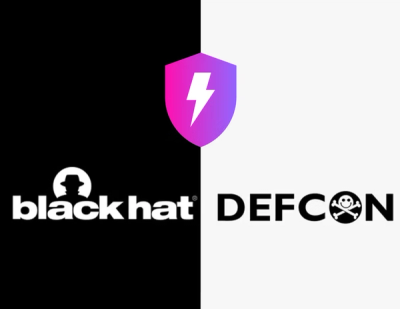
Security News
Meet Socket at Black Hat and DEF CON 2025 in Las Vegas
Meet Socket at Black Hat & DEF CON 2025 for 1:1s, insider security talks at Allegiant Stadium, and a private dinner with top minds in software supply chain security.
next-graphql
Advanced tools
NextGraphQL.js is a zero-config GraphQL server for Next.js, supporting Vercel Serverless environment runtime.
From your main Next.js project path run:
npx next-graphql init
Then, open http://localhost:3000/api/graphql.
It's really easy to build a schema using Nexus and NextGraphQL:
// pages/api/graphql.ts
import { extendType, objectType, makeSchema } from "nexus"
import { handler as nextGraphQLHandler } from "next-graphql"
export const config = {
api: {
bodyParser: false,
},
}
const Query = extendType({
type: "Query",
definition(t) {
t.field("hello", {
type: "String",
resolve() {
return "Hello, world"
},
})
},
})
const nexus = makeSchema({
types: [Query],
})
export default nextGraphQLHandler({
schemas: {
nexus,
},
})
For a complete example, see examples/nexus.
One of the main motivations behind this project was to provide a more integrated experience with GraphQL and Authentication.
Most BaaS services provide some sort of authentication capabilities but having deep auth integration with your project is beneficial.
Adding NextAuth is a few lines of code.
// pages/api/graphql.ts
import { getSession } from "next-auth/client"
import { handler as nextGraphQLHandler } from "next-graphql"
export const config = {
api: {
bodyParser: false,
},
}
export default nextGraphQLHandler({
session: ({ req }) => getSession({ req })
schemas: {
// ...
}
})
This will add a {session} object to the resolver context.
You can easily guard content:
// pages/api/graphql.ts
import { getSession } from "next-auth/client"
import { handler as nextGraphQLHandler } from "next-graphql"
import { isAuthenticated } from "next-graphql/auth"
export const config = {
api: {
bodyParser: false,
},
}
export default nextGraphQLHandler({
session: ({ req }) => getSession({ req })
schemas: {
// ...
},
guards: {
Query: {
myQuery: isAuthenticated
}
}
})
Remote schemas are a first-class citizen in NextGraphQL. By default all schemas are merged and stitched together creating a primary, "gateway" schema.
For a full working remote example, see see examples/remote
This will add the SpaceX GraphQL endpoints:
// pages/api/graphql.ts
import { handler as nextGraphQLHandler, remote } from "next-graphql"
export const config = {
api: {
bodyParser: false,
},
}
export default nextGraphQLHandler({
schemas: {
spacex: remote("https://api.spacex.land/graphql"),
},
})
Now suppose that you want to guard some of the endpoints in the remote schema:
// pages/api/graphql.ts
import { handler as nextGraphQLHandler, remote } from "next-graphql"
import { rule } from "next-graphql/guards"
const fiftyPercentFailWithError = rule()(async (parent, args, ctx, info) => {
return Math.floor(Math.random() * 100) % 2 === 0 ? true : new Error("You were randomly selected to have this endpoint fail.")
})
export const config = {
api: {
bodyParser: false,
},
}
export default nextGraphQLHandler({
schemas: {
spacex: remote("https://api.spacex.land/graphql"),
},
guards: {
Query: {
ships: fiftyPercentFailWithError
}
}
})
Suppose you want to add an authorized endpoint, i.e. GraphCMS:
// pages/api/graphql.ts
import { handler as nextGraphQLHandler, remote } from "next-graphql"
export const config = {
api: {
bodyParser: false,
},
}
export default nextGraphQLHandler({
schemas: {
graphcms: remote(process.env.GRAPHCMS_URL, {
headers: {
Authorization: "Bearer " + process.env.GRAPHCMS_TOKEN,
},
}),
},
})
Sometimes we want to alter the upstream schema. This removes all references to Ship, which will also filter and prune the final schema removing all unused types from the gateway schema.
// pages/api/graphql.ts
import { handler as nextGraphQLHandler, remote, helpers } from "next-graphql"
export const config = {
api: {
bodyParser: false,
},
}
export default nextGraphQLHandler({
schemas: {
spacex: remote("https://api.spacex.land/graphql", {
filter: {
types: helpers.onlyTypes("Ship"),
},
}),
},
})
NextGraphQL supports an Extension format to make it easy for submodule development:
// pages/api/graphql.ts
import { handler as nextGraphQLHandler, remote } from "next-graphql"
export const config = {
api: {
bodyParser: false,
},
}
const customExtender = {
resolvers: {
Query: {
ships: async (obj, args, context) => {
return getDataFromOtherSource() // custom override resolver
}
}
}
}
export default nextGraphQLHandler({
schemas: {
spacex: remote("https://api.spacex.land/graphql"),
},
extensions: [customExtender]
})
Extensions support the following options:
export type Extension = {
typeDefs?: string
resolvers?: {
[key: string]: any
}
middleware?: Middleware | Middleware[]
guards?: Guards
}
NextGraphQL is a new project but we're super grateful to all our contributors as we expand and built out the project.
We'd also like to make a massive shoutout to the Guild team for their contributions to GraphQL, without which this project wouldn't exist.
MIT
FAQs
GraphQL for Next.js
We found that next-graphql demonstrated a not healthy version release cadence and project activity because the last version was released a year ago. It has 1 open source maintainer collaborating on the project.
Did you know?

Socket for GitHub automatically highlights issues in each pull request and monitors the health of all your open source dependencies. Discover the contents of your packages and block harmful activity before you install or update your dependencies.

Security News
Meet Socket at Black Hat & DEF CON 2025 for 1:1s, insider security talks at Allegiant Stadium, and a private dinner with top minds in software supply chain security.

Security News
CAI is a new open source AI framework that automates penetration testing tasks like scanning and exploitation up to 3,600× faster than humans.

Security News
Deno 2.4 brings back bundling, improves dependency updates and telemetry, and makes the runtime more practical for real-world JavaScript projects.